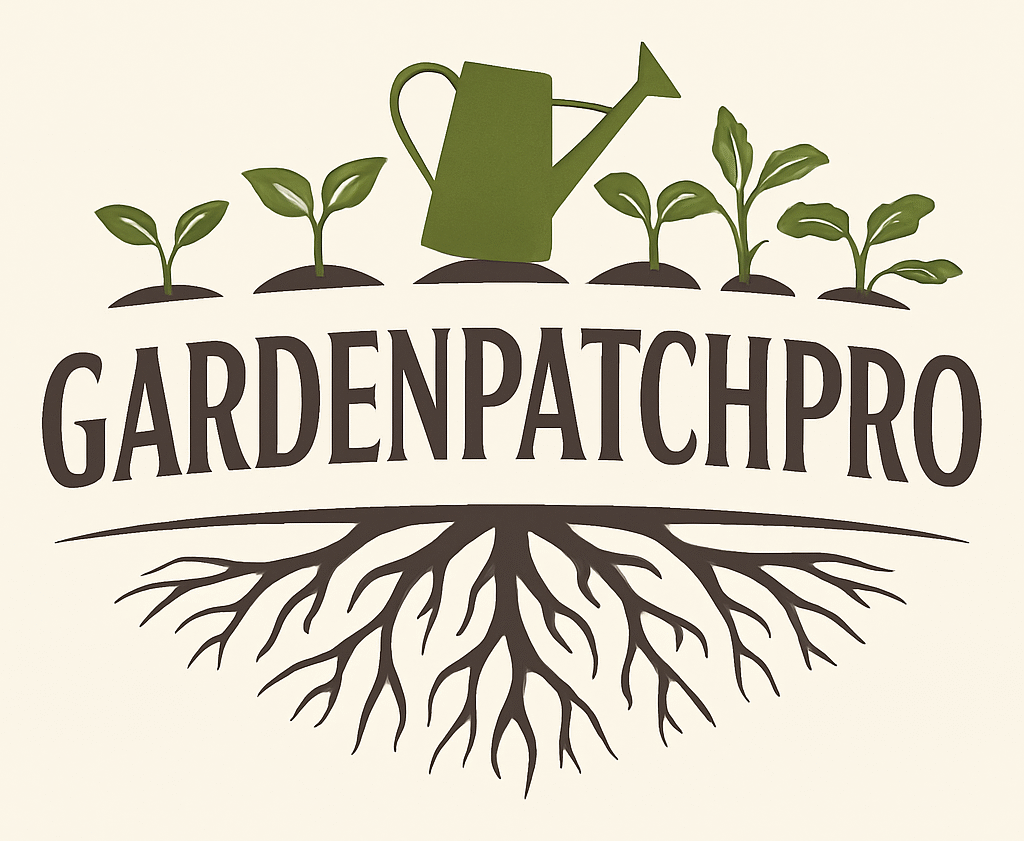12 Hydrangea Landscaping Ideas for Stunning Garden Designs
Hydrangeas are popular garden plants known for their large, colorful blooms and versatility in landscaping. They can add beauty and structure to many outdoor spaces, from small yards to larger gardens. Many gardeners look for ideas on how to use hydrangeas effectively to make their landscape more attractive.

This article shares 12 practical hydrangea landscaping ideas to help anyone enhance their garden with these charming flowers. These ideas offer simple and creative ways to incorporate hydrangeas, no matter the style or size of the yard.
1) Hydrangea macrophylla ‘Nikko Blue’ for sunny spots

Hydrangea macrophylla ‘Nikko Blue’ thrives in sunny areas with some afternoon shade. It prefers morning sun to protect its leaves from strong heat. This plant grows well near patios or garden corners where it can get bright but filtered light.
‘Nikko Blue’ is known for its large, round blue flower clusters. The flower color depends on soil acidity; more acidic soil produces deeper blue blooms. It usually grows 4 to 6 feet tall, making it a solid choice for adding height and color to sunny spots.
This hydrangea needs regular watering, especially in warmer months. It does well in well-drained soil that holds moisture. Pruning after blooming helps maintain its shape and encourages new growth for the next season.
‘Nikko Blue’ is fairly easy to care for. It can face insect issues like aphids or scales, so checking the plant regularly is important. Treat early to keep it healthy and vibrant throughout the growing season.
2) Create a lush hydrangea hedge with ‘Endless Summer’
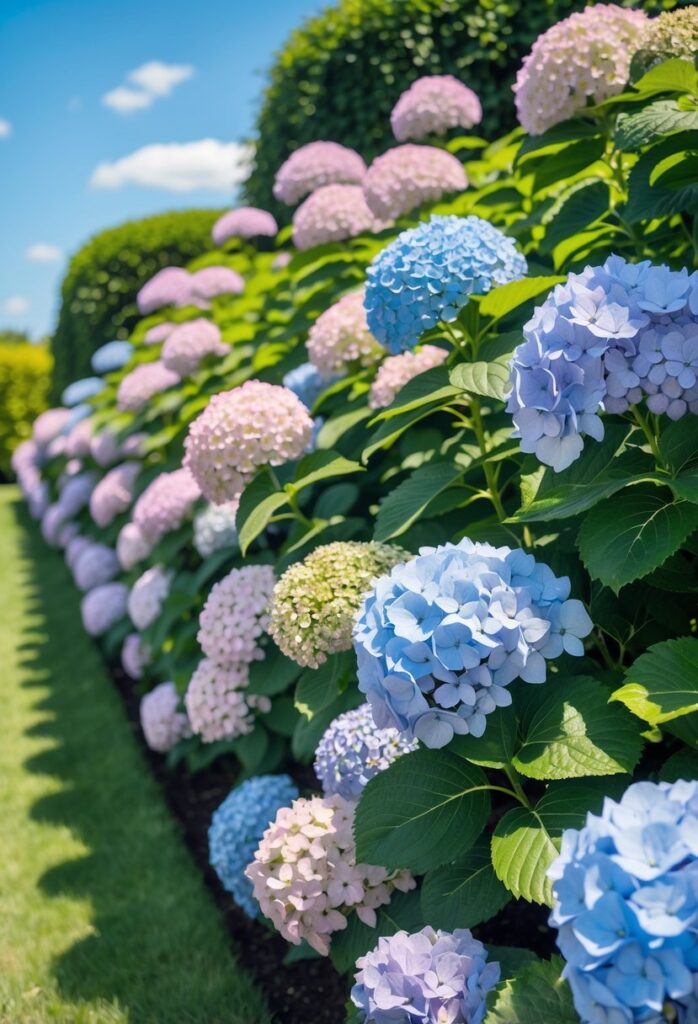
Using ‘Endless Summer’ hydrangeas for a hedge is a practical way to add both beauty and privacy. This variety blooms repeatedly through the season, offering consistent color and fullness. It works well in medium to large yards where space allows for a dense planting.
Plant the hydrangeas close together, about three to four feet apart. This spacing helps the plants grow into a continuous hedge. Regular pruning encourages healthy growth and keeps the hedge tidy.
The ‘Endless Summer’ thrives in well-drained soil with partial sun. It adapts to different soil types but benefits from occasional watering during dry spells. Its blooms range from soft pink to blue tones, depending on soil pH.
Pairing the hedge with low plants like hostas creates an attractive layered look. The tall hydrangeas provide height and privacy, while the hostas add texture near the ground. This combination balances function and visual interest in the landscape.
3) Mix Hydrangea paniculata with tall purple alliums
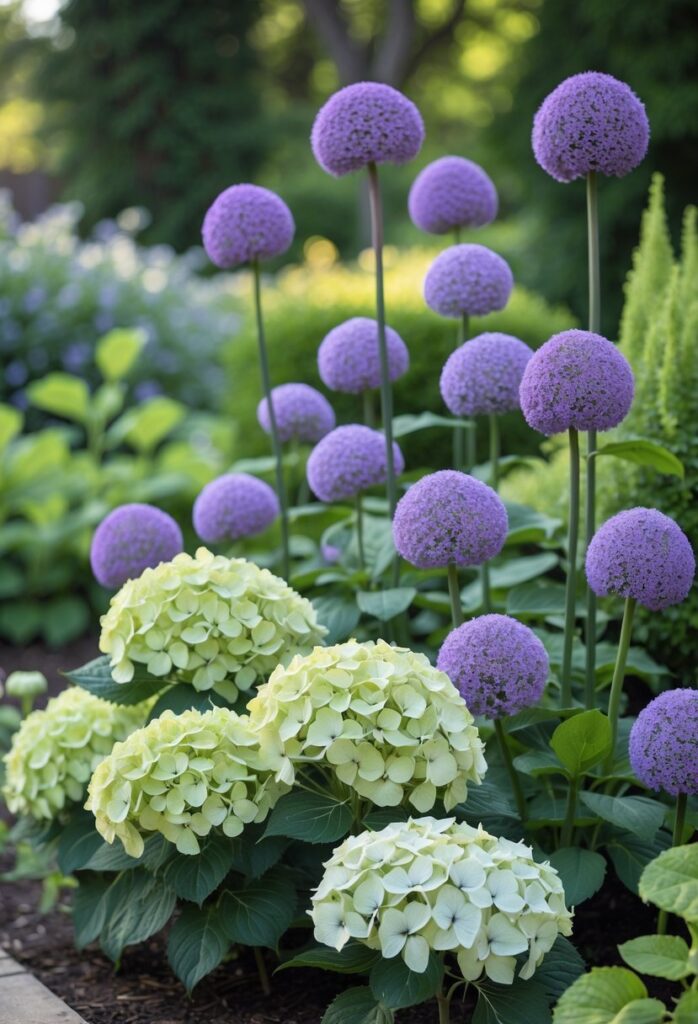
Hydrangea paniculata, especially the ‘Limelight’ variety, pairs well with tall purple alliums. The pale, cone-shaped blooms of the hydrangea contrast nicely with the round, deep purple flower heads of alliums.
This combination adds height and color variation to the garden. Alliums grow tall on slender stalks, giving structure without blocking the hydrangeas.
Both plants prefer sunny spots and similar soil conditions, making them easy to grow side by side. The alliums also attract pollinators like bees, which can benefit the garden’s overall health.
Planting these together creates a balanced look. The soft green and white tones of Hydrangea paniculata complement the bold purple of alliums, producing a visually appealing display.
4) Use Hydrangea arborescens ‘Annabelle’ for shade

Hydrangea arborescens ‘Annabelle’ is well suited for planting in shady areas. It can tolerate dappled shade or partial sunlight while still producing large, white flower clusters. This makes it a good choice for spots where other hydrangeas might struggle.
The shrub prefers moist, well-drained soil but adapts to a variety of soil types. It grows to about 3-5 feet tall and 4-6 feet wide, creating a full, rounded shape that brightens shaded garden corners.
‘Annabelle’ blooms from early summer, offering large, globe-shaped flowers that can reach 25 to 30 centimeters across. These eye-catching flowers add light and texture to shaded parts of the yard.
Because it does well in less sunny locations, gardeners can use it to soften dark areas near homes or under trees. It can also be paired with other shade-tolerant plants for a layered garden look.
5) Plant hydrangeas along stone pathways for structure
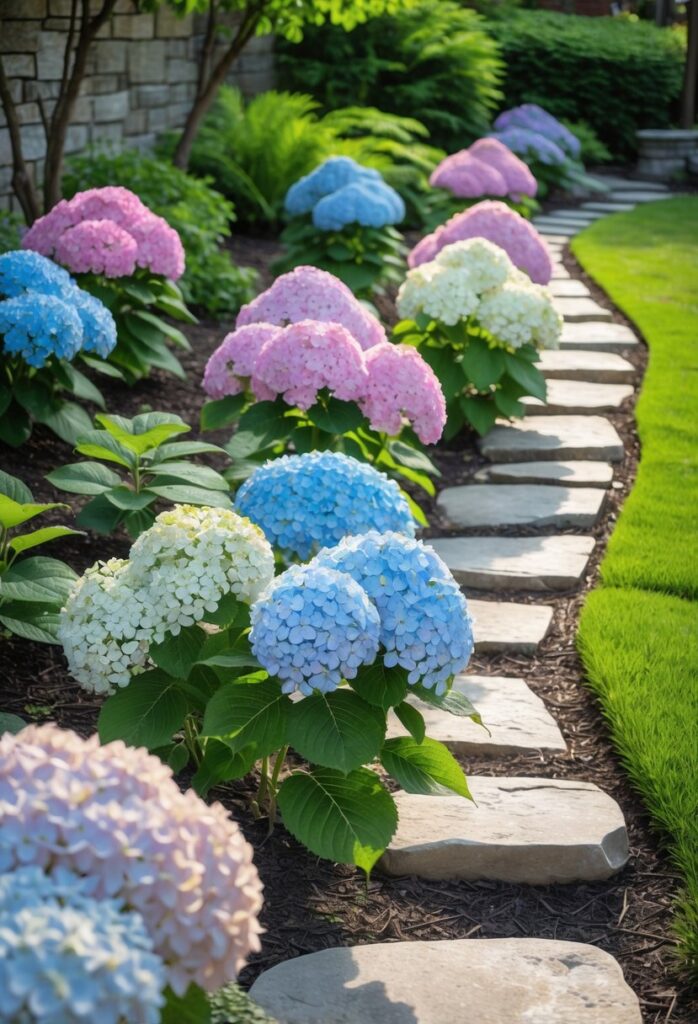
Planting hydrangeas along stone pathways adds clear structure and color to garden spaces. The bushes create a natural border that guides the eye and defines walking areas.
Hydrangeas work well beside gravel or flagstone paths. Their full blooms contrast with the hard texture of the stone, softening the look without losing shape.
Spacing is important to keep the path clear and easy to use. Proper gaps allow hydrangeas to grow without crowding, keeping the area tidy and accessible.
This placement also helps hydrangeas get the right amount of sunlight and air circulation. Stone paths can reflect light, which some hydrangea types benefit from.
Overall, hydrangeas along a stone path combine beauty and function. They elevate the garden’s form and improve the user’s experience by marking the path clearly and attractively.
6) Combine pink and blue hydrangeas to vary color

Combining pink and blue hydrangeas adds visual interest and variety to any garden. These colors naturally contrast and create a pleasing mix. Gardeners can plant both colors close together for a vibrant, colorful display.
The color difference comes from the soil’s pH and aluminum content. Acidic soil (pH below 6) makes hydrangeas blue. Neutral to alkaline soil (pH above 6) encourages pink flowers. By adjusting the soil, gardeners can influence which color thrives.
This combination also allows for seasonal changes. Some hydrangeas may shift hues slightly depending on the soil and weather, giving the garden a dynamic look. Mixing pink and blue varieties provides variety without extra effort.
Using both pink and blue hydrangeas works well along borders, paths, or flower beds. It can highlight certain areas by balancing warm and cool tones. This simple technique is an effective way to enhance backyard landscaping.
7) Incorporate hydrangeas into front yard borders
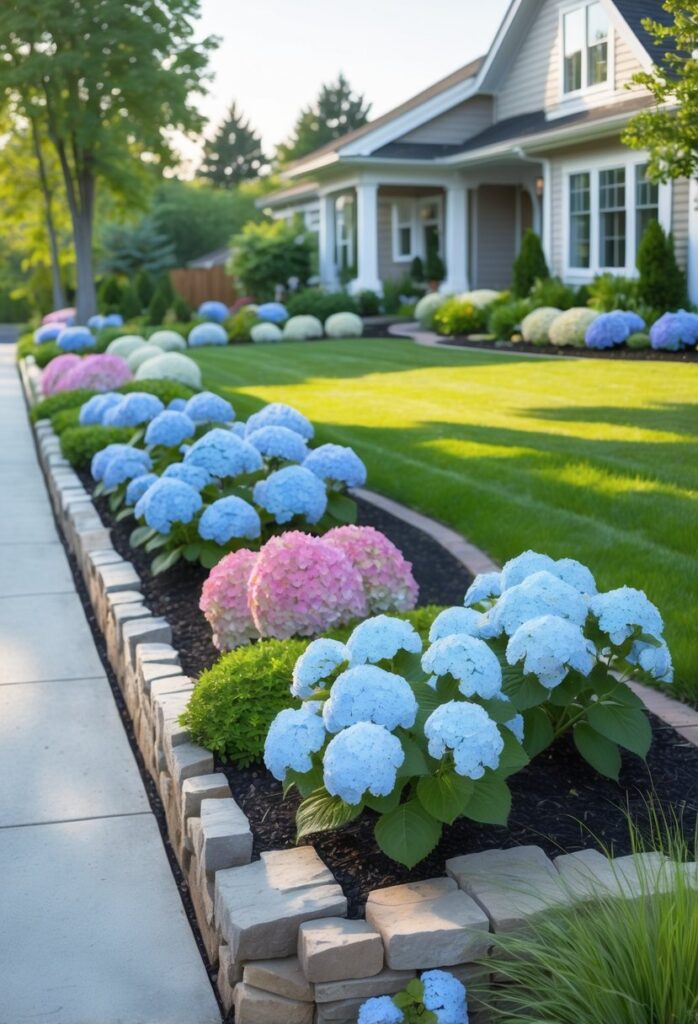
Hydrangeas work well along front yard borders because their full, rounded blooms add color and texture. They create a soft edge that can define walkways or property lines clearly and attractively.
Planting hydrangeas in a line helps create a natural barrier that is visually appealing yet not too formal. It can balance other plants or lawn areas and add depth to the landscape design.
Choosing the right variety is important. Some hydrangeas grow taller, making them good for back borders, while shorter types fit well in front. This variety allows for layering with other flowers or shrubs.
Hydrangeas prefer well-drained soil and some shade, which most front yards can offer. Regular watering and occasional pruning help keep the border neat and healthy through the growing seasons.
By using hydrangeas in borders, the yard gains charm and seasonal interest with blooms that change color depending on soil type and care. This makes borders both functional and decorative.
8) Pair hydrangeas with ferns for textural contrast
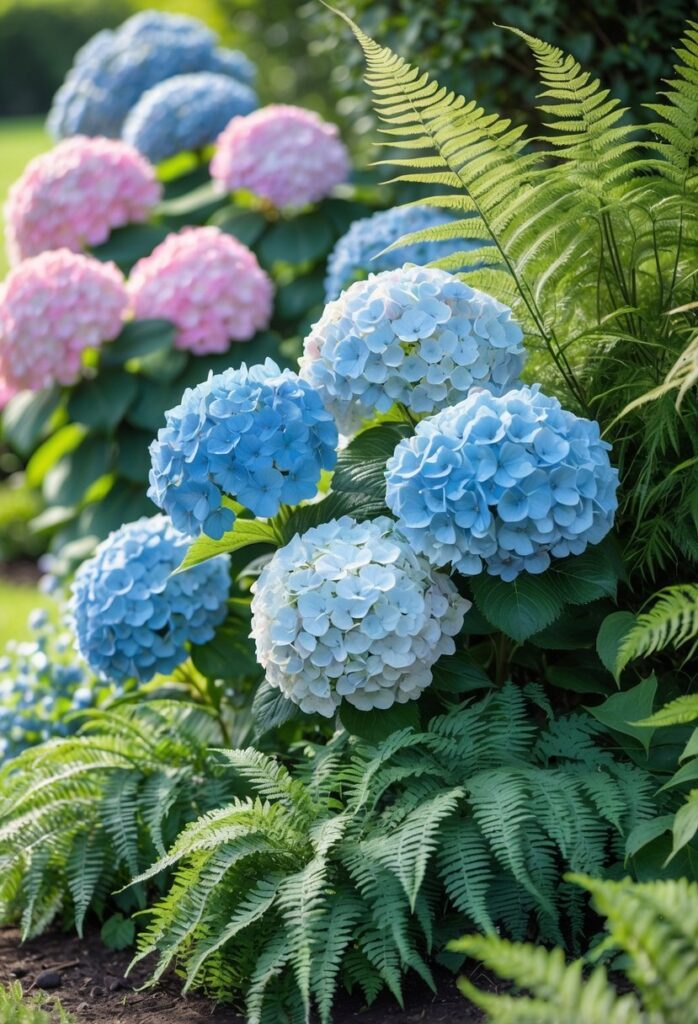
Ferns and hydrangeas grow well together because they both prefer shady, moist conditions. The soft, feathery leaves of ferns create a gentle contrast to the large, round petals of hydrangea blooms. This mix adds variety to the garden without clashing.
Ferns help keep the soil moist around hydrangeas. This can support healthy growth on both plants. Their fine foliage also balances the bold look of hydrangeas, creating a calm and natural garden feel.
Using ferns as companions provides a woodland atmosphere that feels quiet and timeless. The combination gives texture and depth without overwhelming the space. This pairing suits gardeners who want a simple but attractive plant arrangement.
9) Use mophead hydrangeas for a classic garden look

Mophead hydrangeas are known for their large, rounded flower heads. Their big, colorful blooms add a timeless feel to any garden. These flowers come in shades like blue, pink, and white, fitting many garden styles.
They grow best in partial sunlight. Too much sun can dry the flowers, while too little light can reduce blooming. They need regular watering, especially during dry spells.
Mophead hydrangeas bloom on old wood, so proper pruning is important. Trimming should be done carefully to avoid cutting off next year’s flowers. Pruning right after blooming helps keep the plant healthy and full.
Using mophead hydrangeas can create a simple, classic look in a garden. They work well as a border or planted near walkways and porches. Their big blooms draw attention without overwhelming other plants.
10) Plant hydrangeas near patios for seasonal interest

Planting hydrangeas near patios adds color and texture throughout the growing season. Their large, showy flowers change in shape and sometimes color, giving the area fresh appeal as the months pass.
Hydrangeas can soften hard patio edges and create a more inviting outdoor living space. They work well in containers or garden beds beside seating areas.
Choosing varieties that bloom at different times helps keep the patio bright from spring to fall. For example, mophead or lacecap hydrangeas offer different floral styles that work well near patios.
Hydrangeas also provide a natural backdrop and privacy screen without blocking views. Their leafy green foliage offers a calm setting for outdoor relaxing or entertaining.
Regular watering and some fertilizer keep hydrangeas healthy near patios. This care ensures consistent blooming and vibrant colors to enhance the outdoor space every season.
11) Create a romantic garden with hydrangea clusters

Hydrangea clusters can bring a soft, romantic feel to any garden space. Planting groups of these blooms together creates a sense of cohesion and fullness that draws the eye.
Using different hydrangea varieties in close clusters adds texture and color variety. Soft pinks, blues, and whites blend well to enhance the gentle, inviting atmosphere.
Position clusters near seating areas or garden paths to create peaceful spots for relaxing or quiet reflection. The lush flowers offer a calming backdrop that fits well with a romantic theme.
Clusters can also be mixed with other plants like ferns or roses. These combinations build layers of interest while keeping the garden feeling natural and elegant.
Water well and add mulch to keep soil moist. Healthy hydrangeas bloom more fully, helping the clusters stay vibrant throughout the growing season.
12) Use hydrangea shrubs to define garden rooms

Hydrangea shrubs work well to create distinct garden rooms. Their dense foliage and large blooms form natural walls that separate different areas of a garden. This adds structure without building permanent barriers.
They can be placed strategically around patios, walkways, or seating areas. This helps define spaces while keeping the garden open and inviting. Hydrangeas also add color and texture to these garden rooms.
Choosing the right hydrangea variety matters. Some grow tall and dense, making good natural screens. Others stay more compact and work well as low dividers.
Using hydrangeas for garden rooms gives the garden a more organized feel. It allows a clear flow between different areas while enhancing the overall look. This method suits both formal and informal garden styles.
Choosing the Best Hydrangea Varieties for Landscaping
Selecting the right hydrangea involves thinking about the soil, climate, color, and how the plant grows. Each factor affects how well the hydrangea will thrive and look in the landscape.
Soil and Climate Considerations
Hydrangeas prefer well-drained soil with a good amount of organic matter. Clay or sandy soils can work as long as they retain some moisture but do not stay soggy. Soil pH can also influence the flower color on certain types of hydrangeas.
Climate plays a big role in which varieties will do well. For example, bigleaf hydrangeas (Hydrangea macrophylla) thrive in mild climates but may struggle in very cold winters or hot, dry summers. Panicle hydrangeas (Hydrangea paniculata) are more tolerant of cold and sun, making them good for harsher climates.
Gardeners should match varieties to local conditions to avoid stress on the plants and ensure they bloom well.
Color Selection Tips
Hydrangea flower color varies among types. Some, like bigleaf hydrangeas, can change color based on soil acidity—acidic soils produce blue flowers, alkaline soils result in pink.
Other types, such as panicle or smooth hydrangeas, bloom mainly in white or cream shades, which do not change with soil pH.
Knowing the desired flower color helps narrow the choices. Hydrangeas also offer colors ranging from pale pinks, blues, and purples to vivid whites. Mixing varieties with different colors can add visual interest to the garden.
Plant Size and Growth Habits
Hydrangeas vary in size from compact shrubs to large bushes. Bigleaf hydrangeas usually grow 3 to 6 feet tall and wide, good for borders or foundation plantings.
Panicle hydrangeas can reach 8 feet or more and have a more upright shape, making them suitable for background plantings or screens.
Smooth hydrangeas tend to be bushy and about 3 to 5 feet tall. Consider the mature size so plants have enough space and do not crowd other plants or walkways.
Growth habits also affect pruning and maintenance. Some types bloom on old wood, while others bloom on new growth, influencing how they should be trimmed each year.
Hydrangea Care and Maintenance Essentials
Hydrangeas need regular care to keep their blooms healthy and vibrant. Proper watering, feeding, timely pruning, and pest control are key to their success. Attention to these details helps hydrangeas thrive in any garden setting.
Watering and Fertilizing Guidelines
Hydrangeas require consistent moisture, especially during hot or dry spells. They prefer deep watering about 1 to 2 times per week. Shallow watering can cause stress and reduce bloom size. Mulching helps retain soil moisture and keep roots cool.
Fertilize hydrangeas twice a year—once in early spring and once in summer. Use a balanced fertilizer, such as one with an N-P-K ratio of 10-10-10 or 12-4-8. Avoid over-fertilizing, which can cause leafy growth at the expense of flowers. Adjust soil pH to influence bloom color: acidic soil (pH below 6) promotes blue flowers, while alkaline soil (pH above 7) encourages pink blooms.
Pruning Techniques for Healthy Growth
Pruning depends on the hydrangea type. For new wood bloomers like Panicle and Smooth hydrangeas, prune in late winter or early spring. Cut back old stems to encourage fresh growth and larger blooms.
For old wood bloomers like Bigleaf hydrangeas, prune right after flowering ends. Avoid heavy pruning in late fall or winter because it may reduce next year’s flowers. Remove dead or damaged branches anytime to keep the plant healthy.
Use clean, sharp tools and make cuts above leaf nodes or buds to promote regrowth.
Preventing Common Pests and Diseases
Hydrangeas can suffer from pests like aphids, spider mites, and scale insects. Regularly inspect leaves for small insects or sticky residue. Treat infestations early with insecticidal soap or neem oil.
Powdery mildew and leaf spot are common fungal diseases. Ensure good air circulation by spacing plants properly and pruning to open the center. Avoid overhead watering to keep leaves dry.
If fungal problems appear, remove affected leaves and apply a fungicide according to label directions. Keeping plants healthy with proper care reduces disease risk significantly.
Frequently Asked Questions
Hydrangeas can fit many garden styles and spaces, needing the right light, soil, and pruning. Choosing the right variety and pairing them thoughtfully helps create strong design and ease of care.
How can I design a low maintenance garden with hydrangeas?
Selecting varieties like Hydrangea arborescens ‘Annabelle’ helps since it thrives in shade and needs less pruning. Using mulch and deep watering reduces upkeep. Planting in well-drained soil with morning sun also supports healthy growth.
What are some effective small space hydrangea landscaping strategies?
Dwarf varieties or single specimen plants like Hydrangea macrophylla ‘Nikko Blue’ work well in small spaces. Placing them along pathways or in pots can add color without crowding. Avoid large groupings to keep the area open.
What are some creative ways to incorporate hydrangeas into my garden design?
Mixing Hydrangea paniculata with tall purple alliums creates height and contrast. Creating a lush hydrangea hedge using ‘Endless Summer’ provides structure. Using climbing hydrangeas adds vertical interest on trellises or walls.
How do I incorporate hydrangeas in the landscaping in front of my house?
Planting hydrangeas as foundation plants works best with multiple groupings rather than single lonely plants. Use varieties suited to your sun exposure and space, like ‘Annabelle’ for shady spots or ‘Nikko Blue’ for sunnier ones.
Can you provide some tips for creating a visually appealing hydrangea garden?
Use a mix of hydrangea types for varied bloom shapes and blooming times. Add compost when planting and prune correctly based on the variety to keep plants healthy. Deep watering and protecting them from harsh afternoon sun help sustain blooms.
What are the best companion plants to pair with hydrangeas in a landscape?
Tall purple alliums pair well with Hydrangea paniculata for height and color contrast. Shade-loving ferns and hostas complement shade-loving types like ‘Annabelle’. For sunny spots, combine with ornamental grasses or flowering perennials that can tolerate similar conditions.
